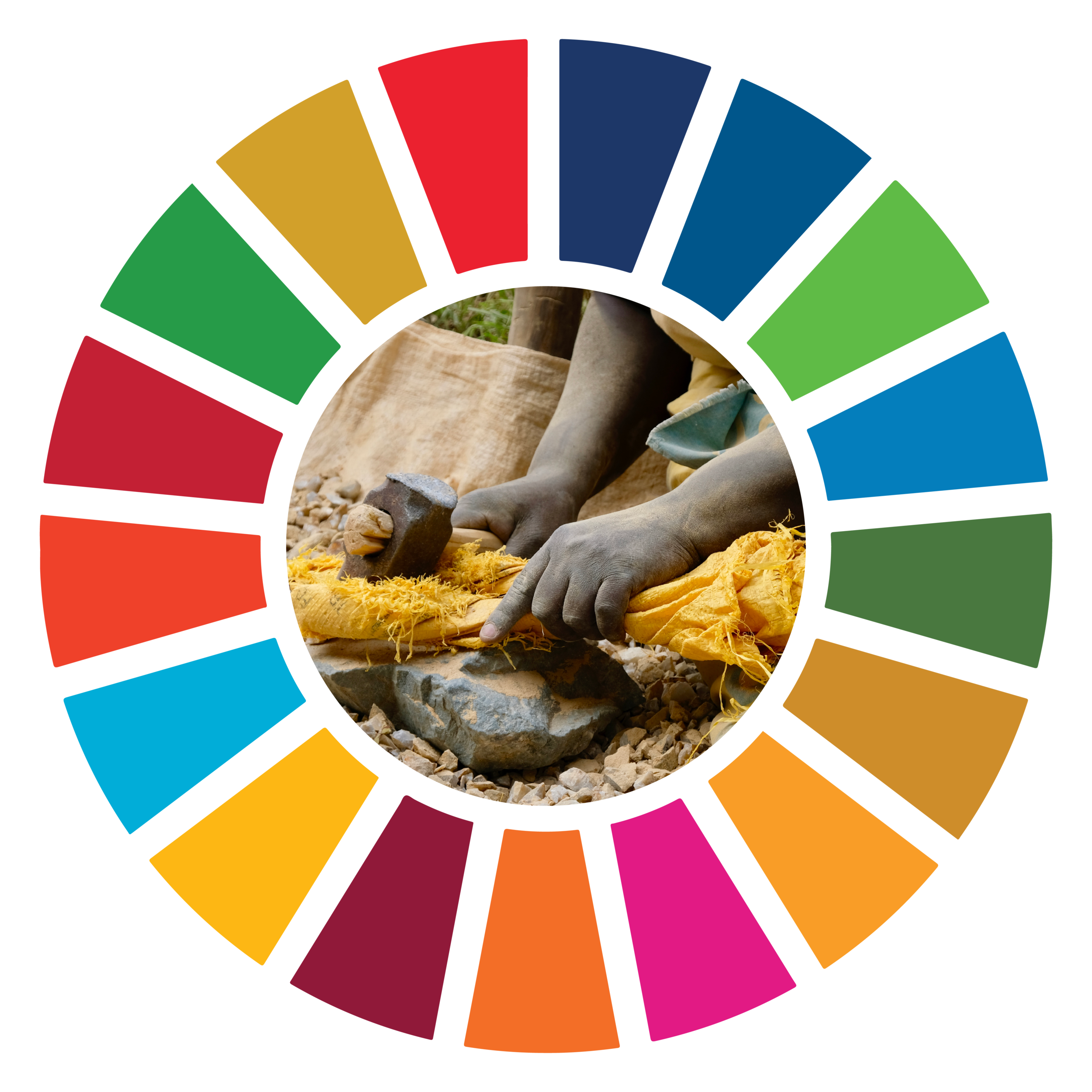By Jorden de Haan
This post originally appeared on Pact's website and is cross-posted here with permission.
It makes intuitive sense that artisanal and small-scale mining (ASM) – low-tech, labor-intensive mineral processing and extraction – cuts across the U.N. Sustainable Development Goals (SDGs).
A sector historically ‘left behind’, the negative impacts are, unfortunately, what ASM has become most known for. To name a few, the largely informal sector is associated with poor occupational health and safety conditions and affects not only human health (SDG 3) and clean water and sanitation (SDG 6), but also life on land (SDG 15) and underwater (SDG 14). Yet the many positive impacts of ASM have also been documented for decades and are becoming increasingly harder for policymakers to ignore. Not only does the sector constitute an essential direct livelihood for more than 42 million women, men, and mostly young people living in rural and typically impoverished areas across the developing world – positively impacting SDGs 1 (No Poverty), 5 (Gender Equality) and 8 (Economic Growth and Decent Work) – it also provides the global economy with technology and precious metals, prized gemstones and development minerals. These include, for example, sand, clay bricks and stone aggregate for local infrastructure development (SDG 9), as well as ancient coral rock hewn on land and used for the construction of affordable houses, improving the resilience of rural settlements across the East African coast (SDG 11).
Coral house on Manda Island, Kenya. Photo credit: Kirsten Dales (co-author)
Yet, while the large-scale mining sector has been mapped to the SDGs, until last week, no comprehensive review of ASM and its interlinkages with all 17 SDGs was available. The sector continues to operate on the margins of global, regional and national development agendas as it has done for the past 40 years – notwithstanding more recent global efforts and international policy mechanisms, such as the OECD Due Diligence Guidance for Responsible Mineral Supply Chains and the Minamata Convention on Mercury, which are creating momentum among policymakers. We need to better understand and present ASM-SDG interlinkages for addressing this policy gap, and for ensuring that global ASM programming and mineral resource policies can harness the interlinkages and the sector’s full potential.
Although the relationship between ASM and certain SDGs has been analyzed individually on separate occasions, a holistic and structured overview of all 17 SDGs has been sorely needed because these many relationships are multi-dimensional and complex. Consider SDG 13 for Climate Action. On the one hand, ASM has clear positive impacts in providing critical minerals such as cobalt and copper, which are required for the transition to renewable and low-carbon energy systems. On the other hand, the sector also has negative impacts through mining-induced land-use change, environmental degradation and biodiversity loss, which threaten the adaptive capacity of ecosystems and people to climate change. And since the 17 SDGs are interlinked, the impacts of ASM on one SDG affects its ultimate or ‘net impacts’ on the attainment of other SDGs. Returning to the previous example, how could we possibly understand ASM’s net impacts on SDG 13 without considering its impacts on community resilience and vulnerability to shocks (part of SDG 1), on life on land (SDG 15) and underwater (SDG 14), or on peace and security (part of SDG 16)?
This is why Pact partnered with the University of Delaware, to develop Mapping Artisanal and Small-scale Mining to the Sustainable Development Goals – the first report assessing the relationships between ASM and all 17 SDGs, which is now freely available online. Building on the global literature, the authors’ field experiences, and inputs from Pact experts and prominent peer reviewers such as Dr. Saleem Ali from the University of Delaware, Dr. Nellie Mutemeri from the University of Witwatersrand, and Caroline Ngonze from UNFPA, the ASM-SDG Policy Assessment maps all of the positive and negative impacts the sector currently has on the 17 SDGs and their respective targets, as well the impacts the sector has (or could have) when adequately formalized. This is the first complete review that builds on earlier work and provides a foundation for understanding ASM-SDG interlinkages from a holistic perspective. As more information about the diverse ASM sector becomes available, this assessment should be updated to reflect that new information.
We found that even in its informal state, ASM makes positive contributions to almost all of the SDGs, but – partly because of this informality – also has negative impacts on most of them. However, if approached in an inclusive and comprehensive manner, formalization can help mitigate many of the sector’s negative impacts and amplify its positive impacts on the SDGs.
But how should policymakers at the national level go about formalizing the ASM sector while harnessing all (locally prioritized) ASM-SDG interlinkages and avoiding adverse impacts?
Moreover, how can ASM and ASM formalization strategies be integrated in national and regional policy frameworks – arguably more critical than linking ASM to the SDGs and their successors?
And what can multilateral institutions, bilateral donors, civil society and the private sector do to encourage and support the entire process?
Following its analysis, the ASM-SDG Policy Assessment provides initial reflections and recommendations to these critical questions – a discussion that the authors, Pact and the University of Delaware hope to set forth in a launch event planned for 15 October in collaboration with the UN Sustainable Development Solutions Network and other partners. Stay tuned for more information soon.




















